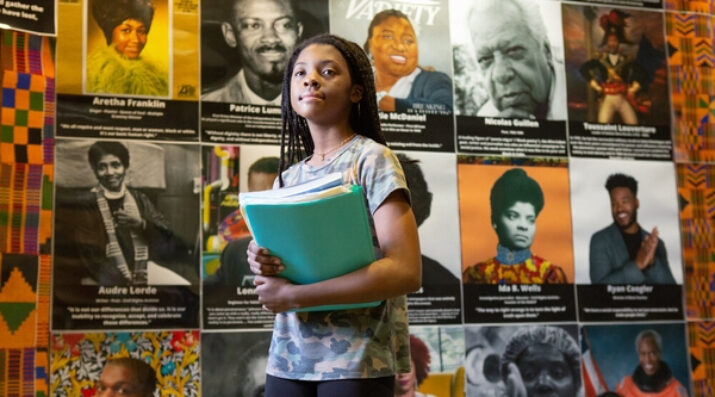Designing for Equity
Culturally Responsive Teaching: Making Learning Relevant
Topics

Together, educators are doing the reimagining and reinvention work necessary to make true educational equity possible. Student-centered learning advances equity when it values social and emotional growth alongside academic achievement, takes a cultural lens on strengths and competencies, and equips students with the power and skills to address injustice in their schools and communities.
When learning content becomes relevant to students and their experiences, engagement and success tend to follow.
We believe that for students to truly engage with learning, they need to see themselves in it. That’s where culturally responsive teaching comes in. It’s about making content relevant to students' lives, experiences, and identities.
For me (Yaritza), culturally responsive teaching was essential in my history classroom. I worked with students who had been told they weren’t good at school, and I knew that if they didn’t feel connected to the material, they wouldn’t engage. So I redesigned my curriculum to center their experiences—bringing in diverse historical figures, acting out historical moments, and even integrating coding into history lessons. My classroom became a space where students felt represented and, more importantly, empowered.
One lesson that really stuck with my students was a unit on economic systems where I let them create their own economies based on different historical contexts. They had to consider resources, trade, labor, and even taxation. This gave them a deeper understanding of economic principles and, more importantly, helped them see the impact of policies on communities like their own.
For me (Victor), integrating culture into STEM was just as crucial. One of my most impactful projects was having students build HBCUs in Minecraft. It wasn’t just about learning to code; it was about connecting with history in a way that felt personal. I saw students take pride in their work, realizing that computer science wasn’t just for a select group—it was for them, too.
Another way I make coding relevant is by allowing students to code interactive family trees, where they not only explore their heritage but also develop important programming skills. Students feel more engaged when they see their culture and experiences reflected in the curriculum.
Culturally responsive teaching isn’t about changing the content we teach; it’s about how we teach it. It’s about understanding who our students are, valuing their experiences, and ensuring they feel seen and heard in the classroom. When we do that, engagement and success follow naturally.
Photo at top by Allison Shelley for American Education: Images of Teachers and Students in Action.




